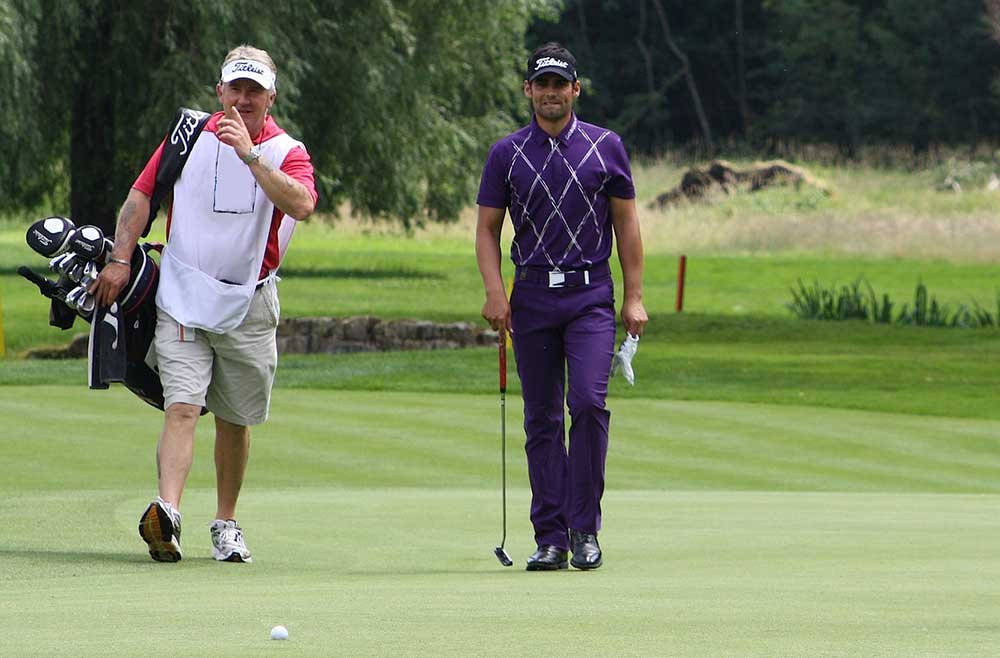The Player-Caddy Conversation

Making Informed Golf Decisions
When we watch golf on TV, especially during major tournaments, we’re treated to remarkable conversations between players and their caddies. These discussions happen just before a shot, and they’re fascinating. But there’s a significant gap between what professional golfers and their caddies do and what average golfers do. It’s understandable; the pros have a caddy by their side on every shot, ensuring they make the best decisions.
However, just because we don’t have a caddy doesn’t mean we can’t learn from their strategies. That’s what I want to discuss today. Let’s imagine you’re about to play a round of golf, and we’ll focus on tee shots as an example.
It’s common to see golfers tee up randomly in the middle of the tee box and aim straight down the fairway. But how many of us hit perfectly straight shots every time? Now, picture yourself as a caddy standing beside a golfer. What kind of conversation would you have?
You’d ask questions like:
- Where are you aiming, and why?
- What club are you using?
- How far do you expect the ball to go?
- In which direction do you expect it to fly?
The problem is, we often consider these things but think about them while standing over the ball. Everything should be sorted out before that moment. So, let’s set up the scenario: you’re the caddy on the first tee, guiding your player. There’s a dogleg to the right with a bunker on the right side.
You’d gather key yardages: How far is it to clear that bunker? Maybe there’s a tree on the left that’s an ideal aiming point. Now, you know your player has a slight left-to-right ball flight. With this information, you’d likely choose to set up on the right side of the tee box.
None of this is complicated, but we often skip this process, and it’s not something we spend enough time on, which can lead to suboptimal setups and missed opportunities.
The same pattern repeats when hitting shots into greens, whether from the fairway or the rough. Are you looking at factors like slope, wind, and actual yardage? For instance, you might have 150 yards to the pin, but it’s into the wind, and the ball is on an upslope. These factors will affect the shot. The slope makes it launch higher, reducing the distance, and the wind will also have an impact. Instead of saying, “It’s a one-club wind,” make more specific calculations.
Now, when we get on the green, you should assess the putt: Is it uphill or downhill? Is it breaking left to right or right to left? Where do you want to aim? Specifics matter here, not vague estimations like “one cup to the left.”
Now, think about this as a caddy and what would happen after the shot. Did you make a good decision? Did you consider all the factors? Such analysis can breed confidence in your decision-making over the round.
Sometimes, it’s the little things that make a big difference. Oftentimes, players complain about their scores, feeling they should be doing better. Yet, they aren’t doing the little things that can help them make informed decisions and avoid silly mistakes.
So, the next time you play, challenge yourself to go through this process on each shot. What questions would you ask yourself? What information would you gather to make the best decisions? You don’t have to do it for all 18 holes; start with one hole and see what you learn.
Moreover, by doing this, you might start to identify areas where you need improvement. When you go to your golf coach, you can say, “I struggle with estimating wind” or “I’m unsure where to aim on doglegs.” This way, you can work on specific issues on the course, not just the driving range.
That’s my take on the Player-Caddy Conversation – it’s a method to make better, more informed decisions on the golf course.
